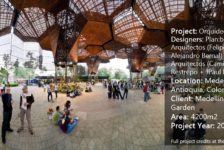Pyramid Garden, a new space saving way to grow crops. In a world of big box stores, convenience shops, and fast food chains, it is easy to lose sight of where our food comes from. Generations ago, families worked the fields and tended to gardens day and night to produce fresh vegetables and herbs for daily meals and canning or preserving for future seasons. Today the trend is again on the rise but we face new obstacles and challenges. In today’s fast-paced, on-the-go, high-energy world, few individuals have the time necessary for intensive vegetable gardening. While many desire to grow their own fresh produce, they often do not have the time or space required to do so.
The Limitations of Growing Crops in Containers
Container gardens have become one popular solution for those seeking to create a personal urban farm, but again there are limitations to container gardens. Some containers do not provide adequate space or drainage for vegetable plants and potted plants may still require weeding and fertilizing which can be time consuming. Even with pots of all shapes and sizes, those in a small city apartment may only have a few square feet to grow the desired variety of plants. The Pyramid Garden Solution The Pyramid Garden introduces an inventive solution to urban gardening for those who are lacking time and space. The planter is made of food grade polyethylene designed and coated to be UV resistant and long-lasting. Its design takes 4 identical panels with holes every 6 inches and arranges them in a pyramid form. WATCH: Pyramid Garden Greenhouse Tour This 4 foot by 4 foot configuration is ideal for sun and moisture requirements of plants and it allows for the highest possible density of plants in the least amount of space. In a 16 square foot area, a budding urban gardener can plant 136 plants. With so many spaces for plants, it allows for rotational crops, a large variety of plants, or planting in stages to increase the length of the harvest.
“The Pyramid Garden design can grow plants up to 30% faster with 80% less water” The Pyramid Garden works on a system of aeroponics. Aeroponics is “the process of growing plants in an air or mist environment without the use of soil or an aggregate medium.” The lack of soil eliminates the need for weeding saving gardeners time and energy. The Pyramid Garden design can grow plants up to 30% faster with 80% less water. Watering is a simple step of spraying the roots with nutrient rich water to encourage plant growth. Desire Breeds Innovation When founder and designer, Allan, had kids, he started to think seriously about ways to grow his own vegetables and herbs to provide safe and healthy food for his family. This need and desire for fresh produce drove him to develop the pyramid design prototype. With the success of the Pyramid Garden, he can harvest fresh vegetables in the dead of winter in Canada without needing to rely upon California growers shipping their goods across the country. He is also able to ensure the quality of the produce harvested and can monitor the use of any pesticides or insecticides. Related Articles:- Landgrab City – Urban Farm
- Dublin Urban Farm: Interview with Paddy O’Kearney
- How to Provide Easy Access to Urban Agriculture in Over Populated Cities
800 plants, in just 32 square foot The Pyramid Garden has applications all across the board. There have been requests for 2 foot by 2 foot Pyramid Gardens for those in compact urban areas looking to grow food on balconies and patios. From the micro scale up to a macro scale, growers have even discussed verticalized vertical planters,’ which would involve placing the 4’x4’ Pyramid Gardens on pallet racks and stacking them at least three high.
This would produce an even higher yield, approximately 800 plants, in just a 16 square foot area. The opportunities span from personal patios and outdoor deck spaces to indoor greenhouses and large warehouses for year around growing. A Green Solution to Environmental Problems The Pyramid Garden also has larger national and international social outreach opportunities. Drought ridden areas such as California may find this as a viable solution for growing crops with less water. This allows for farmers to continue to turn a profit and maintain their family businesses. Additionally, Pyramid Gardens may be deployed in areas that do not have adequate access to fresh produce. These outreach opportunities are in the works through a partnership that has been formed with an outside organization and Pyramid Garden. Who Wants Pyramid Garden? Pyramid Garden has the attention of a wide range of people. From large commercial growers to city bound urban farmers, Pyramid Garden has developed a prototype meeting the needs of those trying to maximize the yield of vegetables, flowers, and herbs in a confined space. Research is still in the works through partnerships with local horticultural greenhouse colleges in Canada to test other plants that may be best suited for aeroponics production. In the meantime, the Pyramid Garden has already solved a very complex issue of providing a means and a way to grow produce in even the smallest of spaces, with very little time involved. Recommended Reading:- The Essential Urban Farmer by Novella Carpenter
- Mini Farming: Self-Sufficiency on 1/4 Acre by Brett L. Markham
Article written by Rachel Kruse Return to Homepage
Published in Blog














